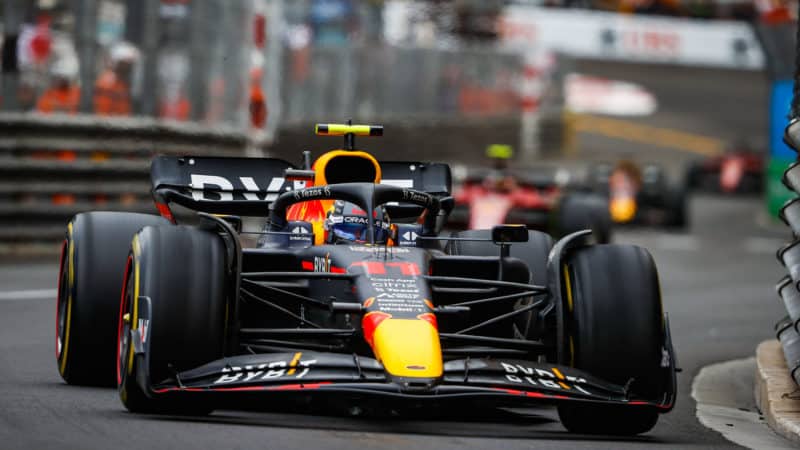As the graph above shows, after a tentative start but Leclerc soon began to assert himself. Lap after lap, the local was getting more and more into a rhythm, starting to pull a gap on his teammate.
Carlos Sainz wasn’t as fast as Leclerc but was doing enough to keep both Red Bulls at bay. So far, so good for Ferrari.
That is, until Red Bull made an aggressive strategy call that caught the Italian team unaware. The Scuderia’s reaction can only be described as sheer panic – pitting the race leader to cover off the rival threat as opposed to its second driver. This, alongside an accidental and failed double stack pitstop all but took the Monegasque out of contention.
With the mandatory stop out of the way and no further calamities on the horizon, Leclerc’s fate of P4 was a done deal.
Chart 2: Tyre crossover and development

The above graph shows the best lap time per lap, grouped by tyre compound.
Pierre Gasly and Sebastien Vettel were among the first to try the intermediate tyre, and it wasn’t long before the two were lapping at the same pace as the race leader. While this helped them recover the pitstop deficit, it only went so far in helping them mount efficient overtakes, such is the difficulty of pitting into traffic at a circuit like Monaco.
This was a troubling sign for those out front, as pitting for the faster tyre was not worth getting stuck in traffic, especially risking two stops.
What this meant was that the most desirable outcome would be yielded by a straight transition from extreme wets to slick tyres, skipping the intermediate phase.







